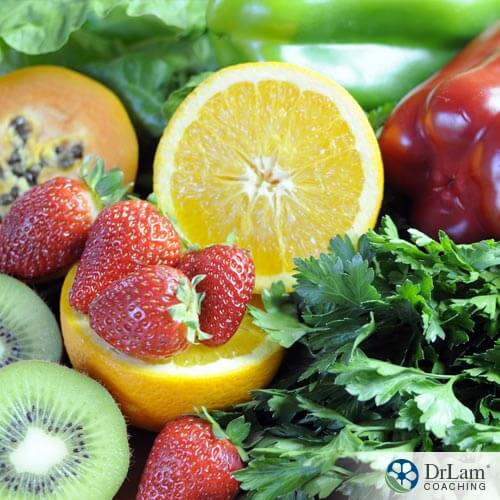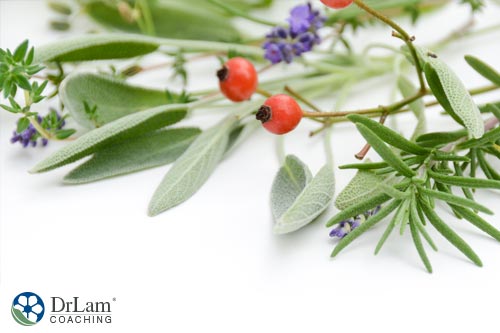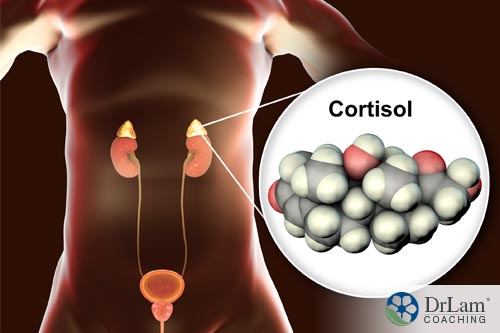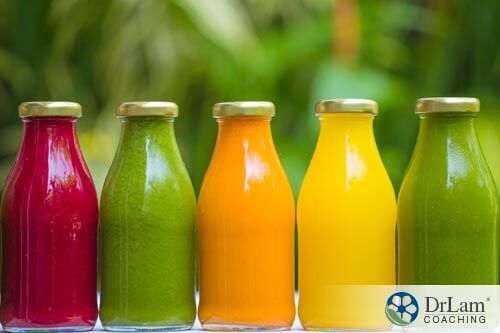Every time another cold and flu season begins, you start to hear about the healing powers of vitamin C. And vitamin C does more than help your body fight off colds. This powerful antioxidant has been associated with reducing the effects of stress and improving overall health. To make sure you are getting enough, you need to know the best sources of vitamin C and where to find them.
 The best way to make sure you are getting plenty of natural and easily digestible vitamin C in your diet is to find more ways to include these six fruits, vegetables, and herbs.
The best way to make sure you are getting plenty of natural and easily digestible vitamin C in your diet is to find more ways to include these six fruits, vegetables, and herbs.
Citrus fruits are often the best source of vitamin C for many people simply because they are so readily available. Vitamins and nutrients can only help you if you are able to acquire and eat them. While there are other fruits and vegetables that may be better sources of vitamin C due to the total amount of vitamin C in them, if you cannot get them year round or where you live, then you can quickly become vitamin C deficient. Oranges, lemons, and limes can usually be bought in grocery stores throughout the year to ensure that you have access to them. One orange, for example, provides about 65 mg to 80 mg of vitamin C.
A bright, cheerful fruit found in the springtime, one cup of strawberries provides 89 milligrams of vitamin C and is one of the tastiest and best sources of vitamin C. Strawberries also contain another mostly unknown nutrient called fisetin. This powerful antioxidant has been shown to fight inflammation, cancer, and can help strengthen nerve cells in the brain.
If a slice of guava conjures up thoughts of beach vacations, the next thought should be how good this pink fruit is for your health. One little guava contains 126 milligrams of vitamin C and is one of the best sources of vitamin C among tropical fruits.
Guavas also contain another vital nutrient called lycopene. Lycopene is an antioxidant which some studies have shown may delay inflammation of the brain and subsequent dementia. It can also help to decrease LDL (the bad) cholesterol and fight against growing cancer cells for men with prostate cancer.
“A rose by any other name would smell as sweet,” said William Shakespeare. What Shakespeare didn’t know, was the beauty of the rose is not gone when the flower dies. The remaining little bud, known as the rose hip, is one of the best sources of vitamin C from flowering plants. This tiny part of the flower is edible and has lots of vitamin C in it. Six rose hips can provide 119 mg of vitamin C.
The smooth, beautiful petals can be a reminder to you that vitamin C can help make your skin soft and beautiful too. Vitamin C has been found to reduce damage to the skin from the sun. It also can help increase the smoothness and moisture in the skin, making your skin as beautiful as the rose.
Raw kale is one of the best sources of vitamin C, but even if you need to cook it, the vegetable is still good to eat because cooking helps the plant to release other antioxidants.
Antioxidants are essential in your diet because they fight against the oxidizing free radicals in the body. Oxidation occurs with each breath as the oxygen is absorbed through the lungs and into the bloodstream. Some of the oxygen is not metabolized and becomes free radicals, which can cause damage to other cells if there are too many. In small quantities, the oxidative process is good because it helps the body to stimulate repair. However, too much of this can create oxidative stress.
When physical and emotional stressors increase in the body, oxidative stress can also increase. While the body attempts to heal, sometimes it is not always successful, and additional symptoms can occur. In order to keep stress on your body low, it’s a good idea to make sure you are getting a variety of antioxidants in your diet.
 Thyme is a fragrant, little herb that can grow in pots on your windowsill or garden. This fresh herb is one of the best sources of vitamin C because each ounce contains 45 milligrams of vitamin C. While a whole ounce is hard to use since it is such a potent herb, even a small sprinkling is a beneficial addition to salads or soups. If you do use it on hot foods, sprinkle it just before eating to keep the freshness.
Thyme is a fragrant, little herb that can grow in pots on your windowsill or garden. This fresh herb is one of the best sources of vitamin C because each ounce contains 45 milligrams of vitamin C. While a whole ounce is hard to use since it is such a potent herb, even a small sprinkling is a beneficial addition to salads or soups. If you do use it on hot foods, sprinkle it just before eating to keep the freshness.
Another benefit of thyme in cold and flu season is its ability to improve immune health and make antibodies. Antibodies are the part of the body’s defenses that attack the foreign invaders that cause illness. This attack system is controlled by the immune system, which is part of the inflammation circuit of the NeuroEndoMetabolic (NEM) Stress Response. The NEM monitors the whole body to keep it healthy. When a bacteria or virus is found, the body goes to work fighting it off, and some of the fighters are memory cells, found in the white blood cells. These memory cells remember which bacteria or virus attacked and how to fight against it. This is why you can usually only get sick with a virus once.
Many of the conditions that vitamin C helps, such as an overactive inflammation circuit of the NEM and oxidative stress, are associated with overall stress on the body. This stress is worsened by eating an unhealthy diet, but it can come from many sources. The NEM stress response deploys multiple systems to address the stress, but it needs rest. Under constant stress, it will eventually tire out. At this point, symptoms of Adrenal Fatigue Syndrome (AFS) can appear. These can show up as:
As none of these specific symptoms point to one particular problem, doctors are often confused at the variety of symptoms and many tests may come back normal. Most traditional physicians are not trained in AFS, so it is essential to be seen by a health professional who understands the condition.
 In the beginning, AFS may not be noticed by anyone, including you. The tiredness may sneakily come on you and can be ignored with an extra cup of coffee or a quick nap. Over time, AFS can become progressively worse as the NEM stress response keeps fighting a losing battle. This is partly due to the presence of cortisol in the body. Cortisol is a powerful anti-inflammatory that is made to help reverse inflammation.
In the beginning, AFS may not be noticed by anyone, including you. The tiredness may sneakily come on you and can be ignored with an extra cup of coffee or a quick nap. Over time, AFS can become progressively worse as the NEM stress response keeps fighting a losing battle. This is partly due to the presence of cortisol in the body. Cortisol is a powerful anti-inflammatory that is made to help reverse inflammation.
It is helpful to remember that the body does not differentiate between physical and emotional stress. Perceived stress is just as stressful physiologically to the body as real stress. The thought of speaking in public, having a bacterial infection, or an awful day at work are dealt with in the same manner. The body works very hard to fight against the stressors and return itself back to normal. Cortisol is there to do just that, and once the invader is gone, cortisol comes in and calms things down.
Cortisol is similar to your emergency bank account. It’s there if you need it, but using it is never fun. Cortisol helps the body to deal with stress. However, when the body is under too much stress, it protects the body too much. It can elevate blood pressure and make insulin resistant to your cells. While this sounds bad, if the body were going into a time of famine or a natural disaster like an earthquake, food and supplies would be scarce. The body “thinks” it will not have the right nutrients in the future, so it stockpiles what it can to get through the difficult time. In the meantime though, you end up gaining weight and at risk or diabetes and heart disease.
 As AFS progresses, the lack of cortisol and the ever-present inflammation continue. Fatigue turns into exhaustion, and some people are unable to manage normal activities. Their health begins to fail even more. Dealing with this end-stage AFS is exceptionally complex and challenging, so it is vital to help the body heal before AFS worsens and ensure the body has the right support.
As AFS progresses, the lack of cortisol and the ever-present inflammation continue. Fatigue turns into exhaustion, and some people are unable to manage normal activities. Their health begins to fail even more. Dealing with this end-stage AFS is exceptionally complex and challenging, so it is vital to help the body heal before AFS worsens and ensure the body has the right support.
Vitamin C is one of those nutrients that, taken properly, that can assist the body in healing from AFS. This is because it is a foundational building block of cortisol, the key anti-stress hormone of the body.
Vitamin C is a water-soluble vitamin. If you do take a large amount in a supplement, and the body cannot use it, it will flush it out with the urine. Thus, it is better to make sure you get a small amount regularly than a big amount once.
Supplements are a quick way to get the nutrients that your body needed easily. However, they cannot undo the effects of a poor diet. Eating processed foods high in sugar and fats all day and then taking a handful of supplements, won’t be enough to keep you healthy. The body becomes overwhelmed with the carbohydrates and preservatives. In addition, there are often micronutrients and phytonutrients in foods that help your body in other ways and help you naturally absorb the vitamins.
Be aware that supplements are unregulated, and you have to be very careful to ensure that you are taking a high-quality supplement that actually contains what it says, and doesn’t contain other toxins from the manufacturing process. It’s also important to ensure the original foods the vitamin C in a supplement comes from are safe.
If you have AFS, a supplement may not be the best source of vitamin C because the body may not be able to absorb it properly. In fact, some people find that vitamin C makes their fatigue worse. This is not unusual, as paradoxical reactions are common with AFS. The weaker the body, the greater the risk. Many others are not aware of how to use vitamin C properly, resulting in a worsening state. Do not assume that the more vitamin C is better.
However, some people who have adrenal fatigue benefit from much higher doses of vitamin C that would be difficult to get from foods. That is the best role for supplements, to replenish vitamin C in order for the adrenals to use it as a cofactor in making the necessary hormones. The vitamin C from fruits and vegetables are great, but might not be enough.
Not all vitamin C is the same. The various forms and delivery systems will ultimately determine the bioavailability and effectiveness of vitamin C. Make sure to ask your provider before starting supplementation, as there are many different types of vitamin C with different assimilation and mechanisms.
 One of the best sources of vitamin C is leafy greens, but it is hard to eat enough of these to get a good amount of vitamin C. That’s where juicing comes in. Juicing is different than a processor or a smoothie blender. Juicing removes the fluid from the pulp of the vegetable, and it can be drunk instead of eating it.
One of the best sources of vitamin C is leafy greens, but it is hard to eat enough of these to get a good amount of vitamin C. That’s where juicing comes in. Juicing is different than a processor or a smoothie blender. Juicing removes the fluid from the pulp of the vegetable, and it can be drunk instead of eating it.
Those who struggle with blood sugar conditions should be aware that juicing should only be done with careful supervision. Too much juice from fruits and sweeter vegetables can dramatically raise your blood sugar and cause insulin to spike as it doesn’t have as much fiber as eating the actual fruits or vegetables.
Fresh fruits and vegetables are the best sources of vitamin C. The health benefits of vitamin C are numerous. This nutrient helps fight free radicals and cancer, and it decreases blood pressure and cholesterol. The more you can understand the importance of vitamin C, the easier it is to remember to take it. All of the scientific studies in the world will not make a difference until you integrate them into your life. Vitamins and minerals are only healthy if you actually eat them. So the next time you hear a reminder to increase your vitamin C intake, grab a fresh piece of fruit or a leafy green vegetable for the best sources of vitamin C for you.
© Copyright 2016-2019 Michael Lam, M.D. All Rights Reserved.
Citrus, rosemary, thyme, rosehips, guava, and kale are great health foods, and they are among the best sources of vitamin C.
